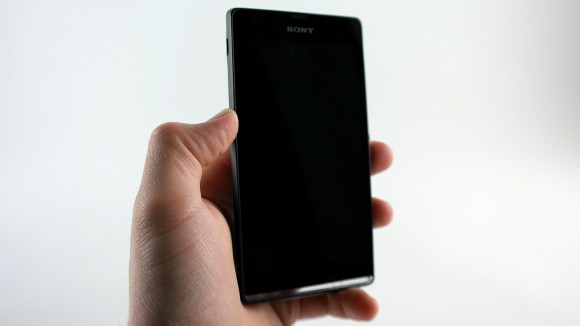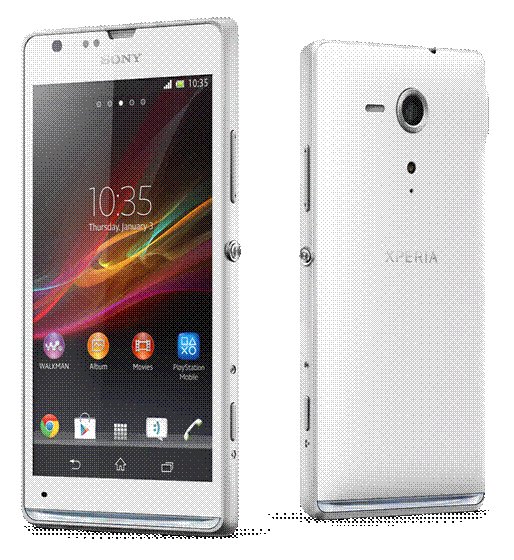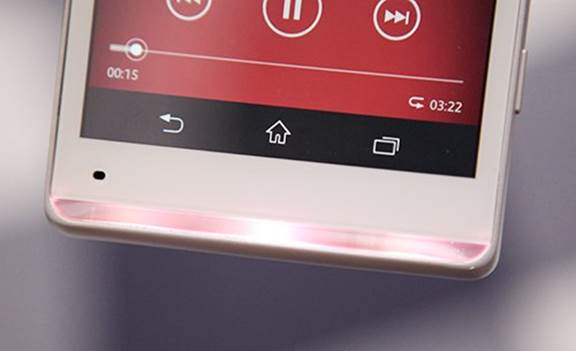Sony Xperia SP is not some kind of Xperia S
and P fusion. Its design is very different from the sum of its moniker,
although the transparent element that defined those devices makes a comeback
here.
Sony Xperia Z has put the company into the
big leagues: the company finally has a handset that turns heads and can compete
with the glorious One and Galaxy brand. But the Z and its plainer ZL variant
weren't the only bullet in the Xperia revolver in 2013. In March, the company
unveiled the Xperia SP and Xperia L handsets to fall in line behind its flagship.
While the L is undoubtedly targeted at the low end of the Android spectrum, the
Xperia SP sits in a strange middle ground, with 720p screen and components that
compete with the flagship of 2012. It also is not some kind of Xperia S and P
fusion. Its design is very different from the sum of its moniker, although the
transparent element that defined those devices makes a comeback here.

Sony
Xperia SP
Is it just another Android phone launched
under the name of Sony which is at lower prices than Z? Is there anything other
than a transparent piece of plastic to make it stand out from the plethora of
other touchscreen rectangles that live in the shadow of their top-tier peers?
Hardware
At first glance, there isn't anything
particularly attractive about the Xperia SP. After opening the box, you do not
deal with anything other than a rectangle with a transparent bar at the bottom.
If so, our initial thought is how simple the phone will be - for example, there
are no physical buttons on the surface. Perhaps this is especially true for the
black/grey model (refreshingly just called "black" on the spec
sheet), but it is available with white and red color, if you like one of these
options. There are design flaws and omissions which we will soon talk to.
However, the description of its appearance will not tell the whole story. Need
some time to really get used to this Xperia, and when the introduction are
over, you will find plenty of personality to fall in love with - warts and all.

A
rectangle with a transparent bar at the bottom
Aside from a lack of any buttons to press
on the front of the handset, there's one piece of Gorilla Glass framing the
4.6-inch display, with the primary mic below it and off to the left (clearly
favoring the right-handed callers). The upper left houses front-facing VGA
camera, with silver Sony logo below earpiece in the middle of the top. The
device's back is covered with a removable panel of rubbery plastic, which
provides light friction when sitting in your palm. There is only one micro-SIM
and microSD slot (32GB card is supported) behind it, so you'll have only one
non-removable 2,370mAh battery. While the rear panel has a little give in the
middle from the get-go, repeatedly pulling it off appears to have stretched it
and nurtured this creakiness. It is noteworthy, but the truth is that after
becoming comfortable with the phone, it sounded more like the crackle of a
familiar leather armchair than the groan of a perilous jetty.

Xperia
SP’s front and back
A silver Xperia logo lies in the middle of
the rear panel, and you will want to remove the cheap-looking sticker beneath
it that signifies the NFC chip inside. Above the logo, you'll find a hole for
the secondary mic, and a small LED flash just above it, followed by the primary
camera lens, highlighted by a raised metal rim for scratch protection. Just to
the left of the camera sits a small, oblong loudspeaker grille. The aluminum
frame that wraps the sides of the handset adds a dash of "premium"
seasoning to the overall build, with 2 small screws in the left and right
edges.
There's also a pair of ports - a 3.5mm
headphone jack on the top edge that spreads into the back panel slightly, and a
micro-USB charging port toward the top on the left side. The charging socket
bloats the frame by a few millimeters, but the asymmetry is not bad. Obviously
it is arranged to make room for the display's hardware inside, and there's no
way it could fit in the bottom edge due to the "transparent elements"
covering that area. However, with the right-handed people, the location of the
micro-USB port means you can continue to use it comfortably while it is
charging.

There's
also a pair of ports - a 3.5mm headphone jack on the top edge
The only physical buttons of the device
claim the right edge of the frame: a two-stage camera button near the bottom, a
volume rocker nearer the top and a machined-aluminum power key in the middle.
That on/off button protrudes a few millimeters from the frame - more than on
the Xperia Z - and even though it looks like a quality piece to be
requisitioned from luxury watches, we can only describe it as a loss defects in
a simple but beautiful design. While it is located in the perfect position to
wake the screen quickly, it often scratches at your forefinger, drawing unnecessary
attention to itself. It's significant enough to mention, but we often easily
forget it, so we doubt that it will make someone mad in the long run.

A
two-stage camera button near the bottom, a volume rocker nearer the top and a
machined-aluminum power key in the middle
Measuring 130.6x67.1x9.98mm (5.14x2.64x0.39
inches), Xperia SP is closest in size to the last year's Xperia T. Its size is
slightly larger than both the Xperia S and P - not surprising based on the
larger screen of the SP. Due to a curved back, it is also a bit thicker than Z.
The device's slightly rounded back panel, smooth corners, edges and general
dimensions fit well in the hand, making SP very comfortable (which the author can’t
say about the Xperia Z). Apart from an occasional niggle from the scratchy
power button, getting around the 4.6-inch display with your thumb isn't a
problem. The SP got a weight of 155g (5.47 ounces), making it heavier than any
other member of the Xperia line mentioned earlier. The slight weight increase
over many of its peers only makes it feel denser - it speaks to the build
quality, if anything.

The
transparent element looks special natural on the SP
You will note that we have not said much
about the transparent elements, but we want to save the best part of the
hardware design for last. Some may think the revival of the see-through bar a
gimmick, but it's a playful touch that (literally) lightens up what's otherwise
an understated device. It looks special natural on the SP, because it is
located between the main body and the frame, not flanked by another chunk of
phone underneath like on the Xperia S and P. It is your beacon for missed
calls, text messages, email and so on, as well as warning lights for low
energy. While it glows purple when you are working in the application of the
Sony Walkman, one setting takes timing and intensity cues to pulse more-or-less
faithfully along with whatever's playing, if you want to show it off on the
bus. Another feature is probably useless but no less entertaining feature turns
the bar a hue that most closely matches the predominant color of your pictures
as you flick through in the Album app. The transparent element, as in the
Walkman application, will also pulse in time with your ringtone, and glow solid
when on a call.